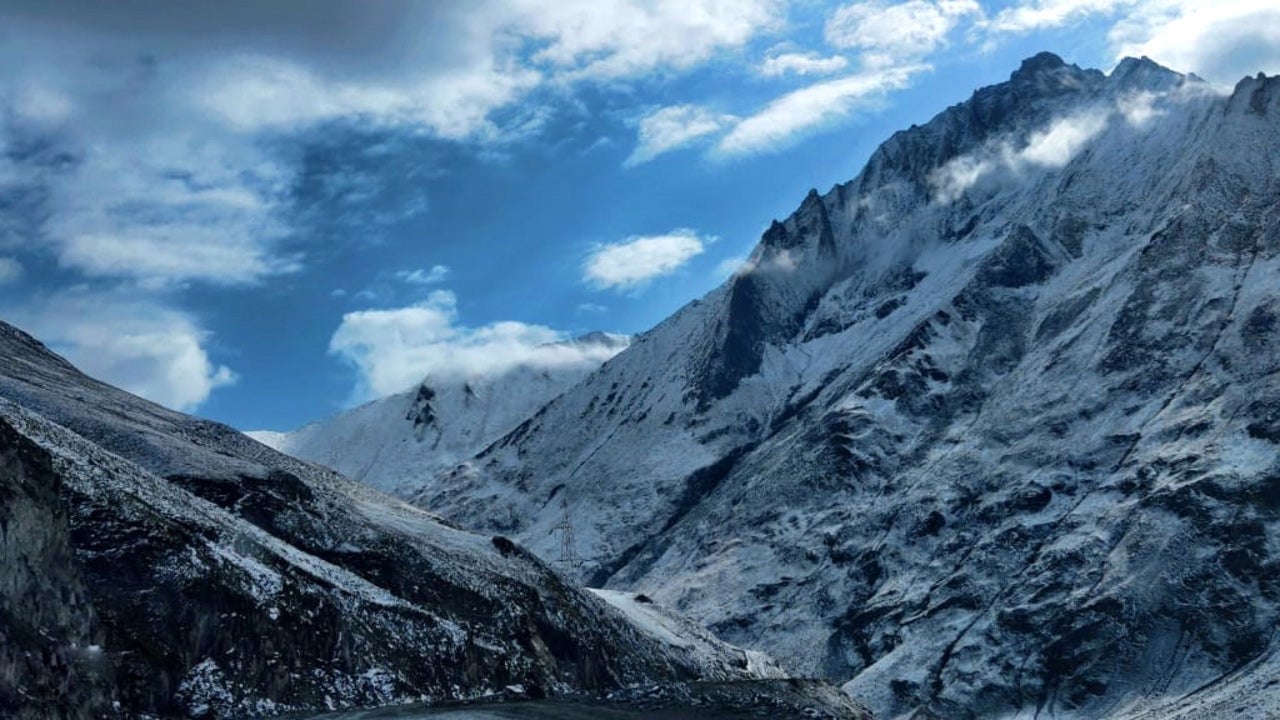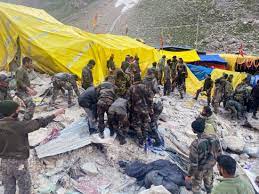La Niña effect: Kashmir to witness heavy precipitation, prolonged cold spells this winter
Kashmir is bracing for harsh weather conditions this winter with heavy precipitation and prolonged cold spells, according to the India Meteorological Department (IMD) which has forecasted a La Niña event.
According to the IMD, Jammu and Kashmir is experiencing foggy mornings and there has been a gradual decline in both maximum and minimum temperatures.
Dr Mukhtar Ahmed, a senior scientist at IMD, stationed at and heading the Srinagar weather station, confirmed the onset of the La Niña weather effect, predicting a colder and beyond normal precipitation for Kashmir region this year, news agency KNO reported.
He said the impact of La Niña was likely to be evident starting mid-December this year with an expectation of heavy precipitation and intensified cold spells.
La Niña is a natural climate phenomenon occurring in the Pacific Ocean. It is characterised by cooler-than-average sea surface temperatures in the central and eastern equatorial Pacific. This cooling disrupts the atmospheric circulation patterns, significantly influencing weather systems worldwide.
Typically, La Niña leads to wetter-than-usual conditions in Southeast Asia and parts of Australia, while causing colder winters and increased precipitation in regions such as South Asia, including Kashmir.
The IMD said that this year, La Niña is forming over the Pacific Ocean, with its effects being felt across the globe. “While the current conditions are neutral to weak La Niña, the phenomenon is expected to strengthen as the winter progresses. This intensification will likely amplify the impact of cold and precipitation across the Kashmir region and parts of northern India,” it said.
Speaking on the changing weather pattern, Dr Mukhtar said, “The La Niña effect shifts atmospheric dynamics in ways that bring abnormal precipitation and colder temperatures. This can translate to a harsher winter for Kashmir, with more frequent snowfalls and prolonged cold spells.”
He said that past instances of La Niña, particularly in 2018-19 and 2021-22, brought significant snowfall to the region. “The likelihood of heavy snow spells and rainfall is high this season, and this could result in a much colder winter compared to the last few years,” he added.
The Kashmir Valley, already accustomed to freezing winters, remains highly vulnerable to the effects of La Niña.
Dr Mukhtar said it is important to learn from previous winters, citing the deficit precipitation observed during strong El Niño years and the subsequent changes in weather patterns. “Unlike last year, which was dominated by El Niño, this year’s La Niña effect will likely bring a more traditional and harsh Kashmiri winter,” he said.
Minimum temperature settles above freezing point as higher reaches receive fresh snowfall
Fresh snowfall was recorded in many places, including the tourist towns, in the higher reaches of Kashmir on Saturday despite the night temperature settling above freezing point at most locations, officials said.
Many places in the higher reaches of Kashmir experienced fresh snowfall under the influence of a western disturbance, they said. The famous tourist resort town of Pahalgam in south Kashmir’s Anantnag district witnessed the season’s first snowfall. Other tourist destinations, including the ski resort towns of Gulmarg and Sonamarg, also recorded snowfall.
Snowfall was also reported from Gurez, Zojila axis and a few other upper areas, the officials said. The snowfall on the Zojila axis resulted in the closure of the Srinagar-Leh highway, they added.
The Met Office said the weather would remain cloudy with the possibility of light rain or snow at isolated to scattered places in the higher reaches of the Valley on Saturday.
On Sunday, the weather will be partly cloudy with light rain or snow at isolated places in the higher reaches. From December 2, there are chances of light rain or snow at scattered places in the higher reaches over two days.
The weather is likely to stay generally dry during December 4-7, after which light rain or snow is possible at isolated places in the higher reaches on December 8, the weather office said.
Meanwhile, the night temperature rose across Kashmir owing to overcast conditions and settled above freezing point at most places, the officials said. Srinagar recorded a low of 1 degree Celsius, higher from the previous night’s minus 1 degree, they said.
Qazigund, the gateway town to the Valley in south Kashmir, recorded a low of minus 0.4 degrees Celsius. The minimum temperature in Pahalgam settled at minus 1.5 degrees Celsius — the coldest in the Valley.
Gulmarg registered a low of 0.5 degrees Celsius and Kupwara minus 3.4 degrees. The minimum in Kokernag in south Kashmir settled at 3 degrees Celsius.



